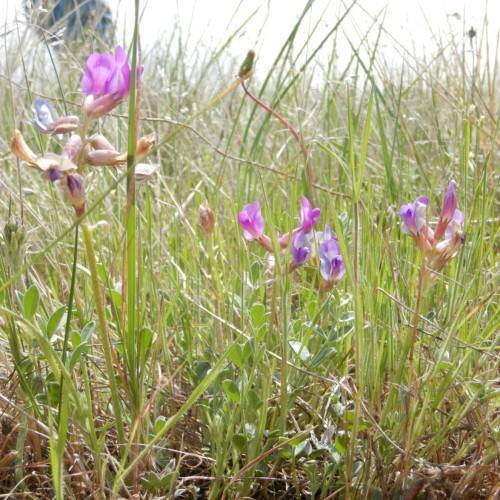
Prairie Milkvetch
Astragalus flexuosus var. flexuosus
Also Known As - Flexile MilkvetchWatering:
Minimal
Hardiness Zone:
Sun:
full sun,part shade
Fruits:
Fruits Ready In
Leaf:
Yes
Growth Rate:
Low
Salt Tolerant:
Yes
Care Level:
Medium
watering
Russian Milkvetch should be watered once every 7-10 days. This plant prefers to have moist soils during the growing season, so make sure to check the soil's moisture before applying any water. During the hotter months, it may need to be watered more often. If the soil has dried out, it should be given a deep, thorough soaking until water runs off the soil's surface. Make sure you never allow the soil to dry out completely, as this can cause the plant to suffer and even die. In the winter, when the plant is dormant, the watering frequency should be reduced.
sunlight
Russian Milkvetch (Astragalus falcatus) prefers full sun to partial shade for optimal growth. In best conditions, this species should receive 6 to 8 hours of sunlight each day, with the intensity of the sunlight varying depending on the season and location. During the spring and summer months, direct, intense sunlight may be ideal – in the winter or in areas with high levels of UV radiation, the plant may need more filtered or indirect light to prevent sunburn. When growing this species, be sure to use a light shade cloth and move the plant to a spot in partial shade during especially hot days.
pruning
Russian Milkvetch plants should be pruned in early spring, each year. Pruning should be done lightly, as these plants don’t respond well to heavy pruning. The goal is to remove any dead, broken or weak stems, as well as any overcrowding of stems in order to maximize air circulation and increase flowering. It is also important to remove any debris or suckers that may be growing near the base of the plant. Pruning shouldn’t be done too drastically, as you don’t want to reduce the plant’s overall size. Pruning should be done carefully, and, once finished, the plant can be fertilized to encourage growth.
